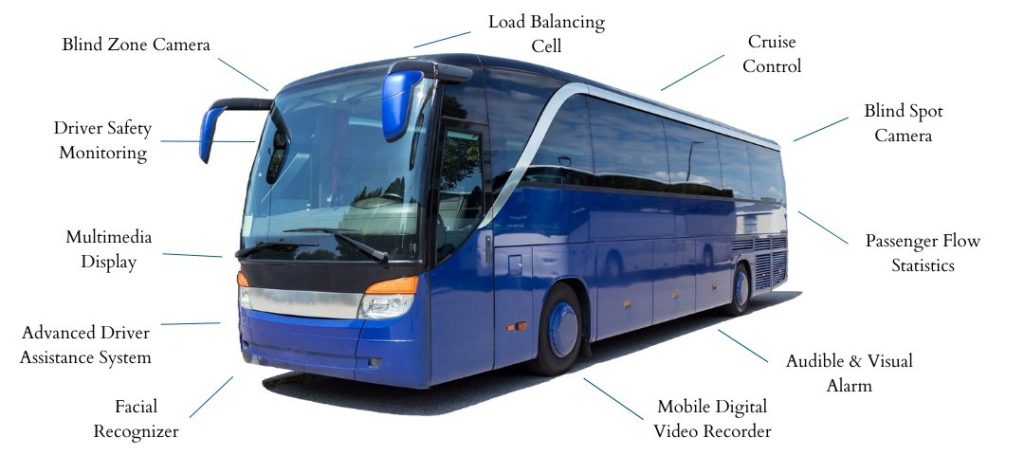What is an Automotive Monitoring System?
Electric vehicles are being adopted widely across the globe and therefore gaining real-time vehicle health statistics becomes necessary. Data specific to vehicles is important for making decisions related to investments in fleet diversification as well as new charging infrastructure. Monitoring systems for electric vehicles play a crucial role in this case, they enable detection of issues and quick diagnostics even on the go, thus ensuring vehicle reliability. Also, due to increasing stringent emission norms, adoption of electric vehicles is slowly asserting changes in the transportation industry through advanced automotive IT solutions. In lieu of traditional internal combustion engines, electric vehicles showcasing vehicle data assists urban planning businesses and governments to support cleaner and emission-free city environments.
A vehicle monitoring system is an integrated platform that can gather, translate, report and analyze the data collected from various automotive parts, sensors and components for overall efficient functioning. It can provide insights into the vehicle’s performance, health and the environment, assisting in proactive maintenance and energy management. It can leverage cutting edge technologies to increase safety, vehicle performance as well as driving experience. In-vehicle monitoring market was valued at approximately US $2.5 billion and is forecasted to reach a value of US $7.9 billion by 2033, surging at a CAGR of 15.2% during this period. Let us now delve more into the intricate details of the functioning and components of these systems in this blog.
Components of Auto Monitoring System
A vehicle monitoring device tracks and collects data from the vehicle over on a computer software designated as the base of operations. It monitors various functions such as speed, fatigue and acceleration to improve efficiency and safety. Given below are the components, functions and characteristics of these systems –
Battery Management System
This ensures that the battery operates within safe parameters and may even incorporate IoT connectivity for remote diagnostics and over-the-air updates. It showcases functions such as determining and monitoring and sending alerts regarding the remaining battery capacity (state of charge) and battery’s condition and age (state of health). It also features thermal management to prevent overheating of battery, cell balancing to ensure uniform voltage across all cells of the electric vehicle to prevent overcharge or over discharge.
Telematics Control Unit
TCU in sync with the vehicle control unit, acts as the communication hub for electric vehicles and connects the vehicle with external networks. Cloud servers can communicate with the vehicle’s Controller Area Network bus featured by the telematics control unit, through Wi-Fi and cellular networks for real-time data transmission, over-the-air updates, GPS-based navigation, fleet management and IoT connectivity.
Advanced Driver Assistance System
ADAS is useful for improving vehicle safety, driver assistance and is usually integrated with vehicle monitoring system and in-vehicle infotainment systems. It utilizes sensors and cameras to avoid collisions and prevent accidents through swift object detection. It alerts drivers against lane departure in case the vehicle unintentionally drifts out of the designated lane. Furthermore, it assists the electric vehicle in maintaining the requisite speed to adjust with traffic conditions through adaptive cruise control adjusting EV motor controller subsequently.
Data Analytics
With vast amounts of vehicle data generated from vehicle detection system including those related to driver behavior like speeding, harsh braking, drunk driving, fatigue, rapid acceleration, distraction, phone usage, environmental conditions and performance metrics, cloud integration becomes a necessary part to aggregate and analyze such data. The results are utilized in predictive maintenance to identify potential issues prior to failures and energy optimization through enhanced driving patterns and charging schedules. It also increases efficiency by providing insights into performance trends and vehicle utilization from historical data to improve predictions.
Infrastructure Integration
The charging process is optimized through close integration with electric vehicle charging infrastructure. This involves smart charging where the charging times and rates are adjusted as per electricity tariffs and regional demand. This feature also assists in locating the nearest or first available charging stations in real-time, load balancing to prevent grid overloads during peak hours and facilitate seamless charging through IoT-powered communications.
Others
Auto monitoring system is useful for commercial applications such as for tracking the status and location of vehicles, optimizing routes to reduce delivery time and energy consumption, monitoring performance to reduce costs and enhance operational efficiency. Features like data encryption, authentication protocols and anomaly detection are of paramount importance or increasing connectivity in electric vehicles and safeguard against potential cyber threats and data leaks.

Components of vehicle monitoring system for buses and heavy vehicles
Auto Monitoring System: Data & Insights
These systems are usually powered by telematics data which may be linked to handheld devices, where data is collected in real-time and processed for route optimization and maintaining vehicle health. Monitoring GPS details and analytics can improve overall vehicle performance with fleet management system and effective predictions. Here is a list of insights that can be gathered through these systems for efficient monitoring –
1. Battery: Data related to the electric vehicle’s battery usage and charging state can determine its health. Vehicle monitoring system can effectively evaluate vehicle state of charge and discharge to avoid sudden issues in the functioning of the vehicle.
2. Route: Scheduled planning and optimization of routes reduces total cost spent for charging, maintaining and utilizing electric vehicles. GPS integrated with real-time mapping features assist in finding charging points enroute. This ensures charging within safety limits, optimal asset utilization, synced functioning of the vehicle’s components as per latest charge readings, and reduced driving related stress.
3. Driving Behavior: As per data on the go, driver behavior or misconduct including sudden braking, over speeding and aggressive acceleration can be altered for improving driving safety, reducing accidental incidents and imposing corrective measures.
4. Others: Gathering data related to charging state or vehicle health amidst uncontrollable factors such as road conditions, adverse climate conditions, rough geographical terrains etc. can help in driving through unpredictable areas and weather especially during certain annual periods. An automotive monitoring system keeps learning from the environment to improve the vehicle’s processes. It helps in determining the energy consumption, performance and range of the vehicle.
Advantages of Vehicle Monitoring Device Integration
- These systems increase vehicle protection from thefts and security threats which help in facilitating recovery of stolen vehicles.
- In case drivers are facing any difficulty related to problematic vehicles, or collisions, immediate assistance can be rendered using real-time data.
- These systems are also useful in reducing insurance premiums by giving detailed insights on incidents that aid in understanding the situation for accurate insurance claims.
- A vehicle monitoring device can also feature geofencing where set boundaries can be useful for alerting regarding speed limit, entry into prohibited areas, remote locking etc.
- As discussed earlier, these assist in exhibiting safe driving behavior by eliminating practices like drunk or fatigued driving, excessive braking etc.
- These systems provide an overview of all the fleet vehicles that can be tracked alongside insights on their location, performance and visibility on overall vehicle health.
- Accidents and collisions can be reduced by reporting driving risk factors, suggested skills and required training as safety measures.
Unlock Effective Monitoring with KritiKal
The current trends in the automotive industry include increasing adoption of electric vehicles to minimize the costs, maximize resource utilization and increase the efficiency of the electric infrastructure. Optimizing fleet utilization by leveraging IoT-based smart solutions and advanced scalable technologies without unnecessary upgrades can overcome cost-related barriers. The evolution of auto monitoring system is driving continuous technological advancements in alignment with the current trends such as 5G connectivity for swift data transmission, vehicle-to-everything (V2X) communications, real-time applications, AI for predictive analytics and informed decision making, charging infrastructure adoption, edge computing for low latency and bandwidth demands etc. KritiKal can assist you in developing such advanced VMS for you to unlock benefits such as improving oversight and streamlining performance across your vehicle portfolio. Please get in touch with us at sales@kritikalsolutions.com to know more about our products and realize your automotive requirements.

Gagandeep Pundir currently works as a Senior Embedded Engineer at KritiKal Solutions. He has a demonstrated history of working in the consumer electronics industry and electrical design. He is proficiently skilled in Matlab, C++, Power Electronics Design, and Embedded Systems with which he has helped KritiKal in delivering many successful projects to some major clients.



 Global
Global  United States
United States 
